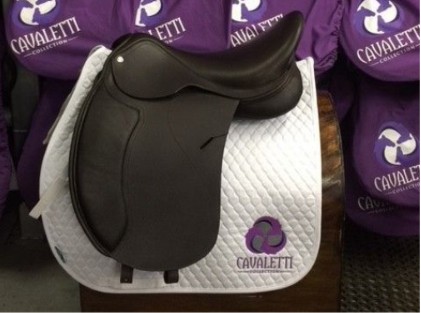cavaletti
-
25 AprRead more »
What Reins Are Right For My Horse?
In the world of equestrianism, the relationship between horse and rider is paramount, and the reins serve as a vital link in this connection. Just as every horse has its own personality and preferences, there exists a diverse array of reins designed to cater to various needs and riding styles. From classic leather to modern rubber, each type of rein offers unique advantages and considerations.

In this guide, we'll explore the different types
-
17 AprRead more »
Horse Riding In Spring: The Best Activities To Start
As the temperatures warm up and the flowers start blooming, there's no better time to get outside and enjoy some horse riding in the beautiful spring weather. Whether you're a beginner or a seasoned equestrian, there are plenty of activities to try out this season. But before you hit the trails, it's important to make sure you have the right gear and attire. Here's a guide to help you get started.
What to Wear for Horse Riding:
One of the most important aspects of horse riding is having the right attire. When it comes to clothing, opt for comfortable, breathable fabrics that allow for movement. A good pair of riding boots with a sturdy sole is essential for safety and control
-
4 AprRead more »
20 Show Jumping Tips To Excel In Your Jumps

What is Show Jumping?
Show jumping, an exhilarating equestrian sport, captivates both participants and spectators alike with its blend of athleticism, precision, and partnership between horse and rider. In this dynamic discipline, horse and rider teams navigate a course filled with a variety of jumps, aiming to clear them flawlessly while racing against the clock. Show jumping is not only a competitive sport but also a captivating form of entertainment, featuring prominently in prestigious horse shows, international competitions,
-
28 MarRead more »
Introducing Our Stirrup Leathers | Shop Today

We are excited to announce the launch of our new Stirrup leathers, shop them here!
Are you in search of the perfect stirrup leathers to accompany you on your equestrian adventures? Look no further than the Cavaletti Collection Stirrup Leathers. Crafted
-
20 MarRead more »
How the Right Headcollar Can Make A Statement
What is a headcollar used for?

A headcollar is a commonly used piece of equipment for horses that serve various purposes. One of the main functions of headcollars for horses is to provide a means of control and restraint. This is particularly useful when leading or tying up the horse, as the headcollar can guide the horse's movements and prevent them from wandering off or getting into trouble.
In addition to control, horse headcollars can also be used for grooming and handling purposes. By attaching a lead rope to the headcollar, the horse can be easily led to and from the stable,
-
15 FebRead more »
Stirrup leathers are an essential component of horse riding equipment. They are straps made of leather or synthetic material that connect the stirrups to the saddle. T
-
9 AugRead more »
Having a good understanding of horse gaits is essential for any rider looking to develop their skills. Gaits refer to the different ways in which horses move, and can be broken down into the walk, trot, canter, and gallop.
-
20 JanRead more »
Learn about the various lunging aids available for your horse with the best steps to help your horse learn easily and correctly.









